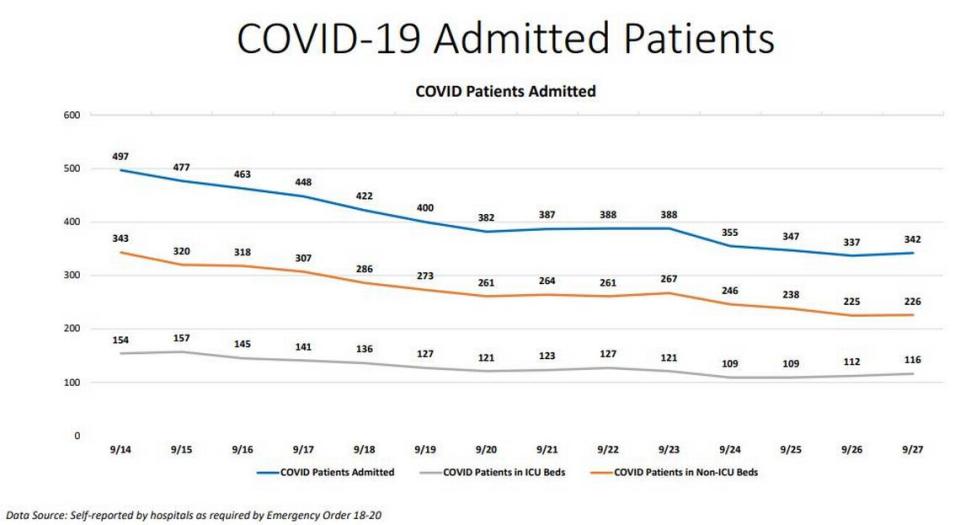Florida’s total COVID-19 case count passes 700,000. South Florida reports no deaths
As the state pushes into what it calls Phase 3 of its reopening, the state’s COVID-19 dashboard reported 1,882 new cases and 10 deaths, none of which came from South Florida.
Less data collection and data entry over the weekend, usually means lower numbers for new cases and deaths on Sundays. Even so, no deaths being reported out of Miami-Dade, Broward and Palm Beach counties, Florida’s three most coronavirus-ridden counties, deserves notation.
Florida’s counted 700,564 total cases and 14,100 total deaths in the novel coronavirus pandemic. Of the latter number, 14,032 were Florida residents.
South Florida counties
▪ Miami-Dade added 282 cases bringing its pandemic totals to 169,426 cases and 3,231 deaths. After Gov. Ron DeSantis’ issued his latest COVID-19 related executive order, Miami-Dade Mayor Carlos Gimenez announced new Miami-Dade guidelines Saturday night.
The county’s average daily positive test rate over the last seven reported days rose to 4.61% from 4.20% for the previous seven days.
▪ Another 154 cases puts Broward’s numbers for the pandemic at 76,854 and 1,379, respectively. The average daily positive test rate fro the last seven days was 3.31%, up from 2.96%.
▪ Palm Beach’s cases increased by 100, to 46,283. The death toll remains at 1,342 and the average daily positive test rate for the week slid from 3.99% to 3.81%.
▪ Monroe’s one new case moves its total case count to 1,835. The Keys death toll remains at 22.
Current hospitalizations
Government officials use current hospitalizations to decide the next action in dealing with the pandemic. On the state level, this has been steadily falling over the last month.
The Florida Agency for Health Care Administration reports the number of patients hospitalized statewide with a “primary diagnosis of COVID.” The data, which is updated at least every hour, does not distinguish between the number of COVID-19 patients in hospital intensive care units and those in acute-care beds, which require less attention from nurses.
As of 11:31 a.m. Sunday, the AHCA’s said there were 2,103 current hospitalizations, down four from Saturday morning. Broward dropped 11 to 202, while Miami-Dade was up three to 271; Palm Beach, up 10 to 121; and Monroe up one, to three.
Florida’s current hospitalization data does not always match the hospitalization data reported in Miami-Dade’s “New Normal” dashboard. Officials say this could be for a number of reasons, including the frequency of daily updates.
Sunday, Miami-Dade reported an increase both in total current hospitalizations (by five, to 342) but in people in intensive care unit beds (by four, to 116). Both are burps in the general downward trend of the last few weeks.

Testing
As of Sunday morning, Florida reported 5,260,602 people had been tested in the state, an increase of 18,439 from Saturday. The rate of positive test returns moved by the most minute of margins, from 13.33% to 13.32%.
By the state’s numbers, it’s average daily positive test rate for the last seven days is 4.61%, up a smidgen from 4.31% for the previous seven days.
Johns Hopkins University’s Coronavirus Resource Center agrees with the state on the overall pandemic positive test rate percentages, but differs with the state on the daily, weekly and monthly percentages. It states Florida’s positive test rate over the week before Saturday was 10.48%.
Johns Hopkins’ site explains how it calculates positive testing rate for each state: “Our calculation...looks at number of cases divided by number of negative tests plus number of cases.
We feel that the ideal way to calculate positivity would be number of people who test positive divided by number of people who are tested. We feel this is currently the best way to track positivity because some states include in their testing totals duplicative tests obtained in succession on the same individual, as well as unrelated antibody tests.
“However, many states are unable to track number of people tested, so they only track number of tests. Because states do not all publish number of positive and number of negative tests per day, we have no choice but to calculate positivity via our approach.”
Florida says it figures positive test rate by calculating “the number of people who test positive for the first time divided by all the people tested that day, excluding people who have previously tested positive.”
Miami ALF shut down for breaking COVID-19 rules and endangering residents, state says

